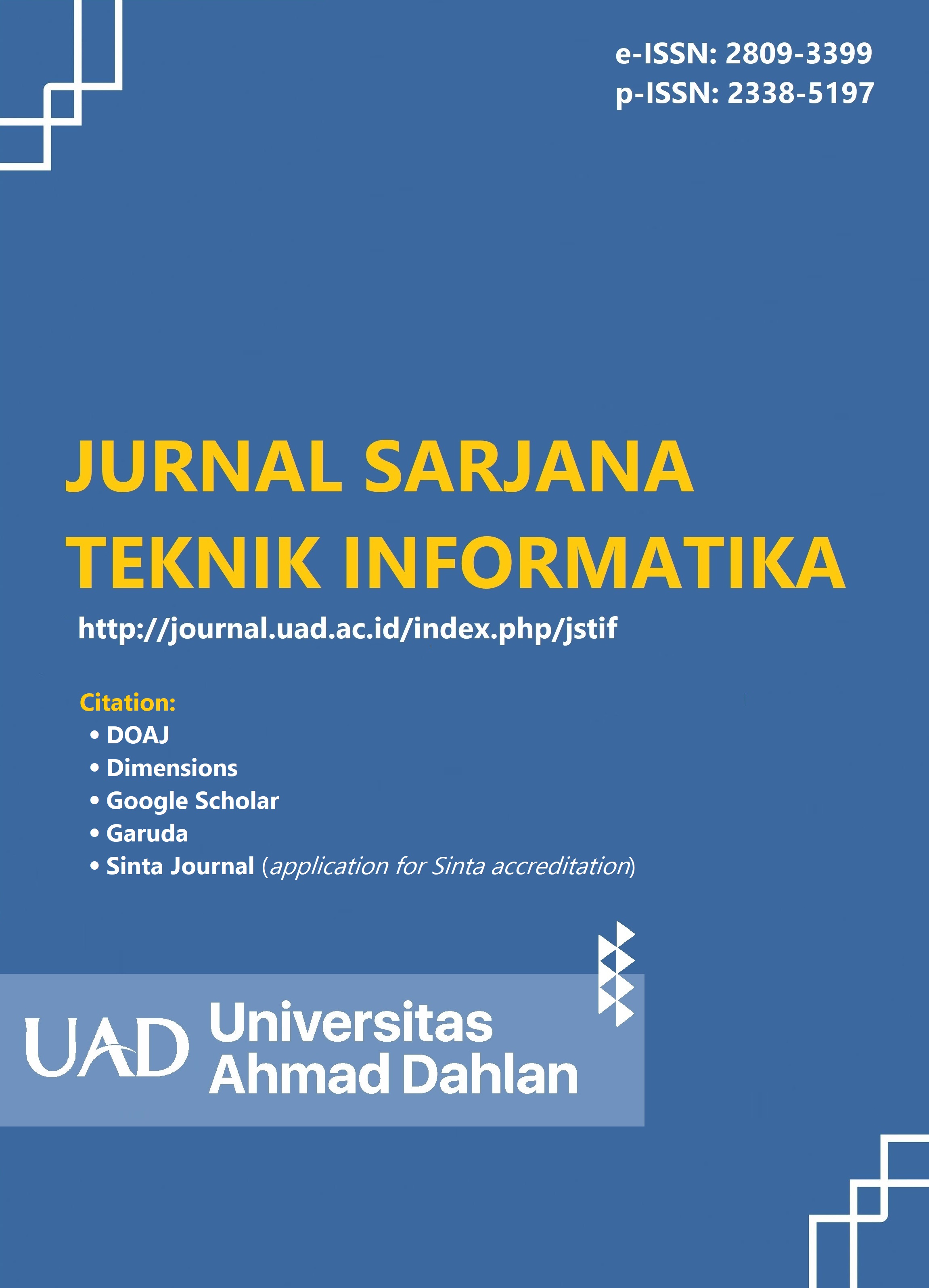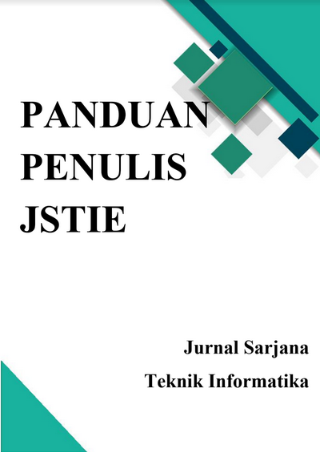Penerapan Metode Design Thinking Pada Aplikasi Pengelolaan Tempat Ibadah
DOI:
https://doi.org/10.12928/jstie.v12i3.26028Keywords:
Design Thinking, Prototipe , Tempat Ibadah , UEQ , UsabilitasAbstract
Desa Renda terletak di Kecamatan Belo, Kabupaten Bima, dan Provinsi Nusa Tenggara Barat yang mayoritas penduduk beragama Islam. Pembangunan masjid, mushola, dan langgar banyak dilakukan seiring jumlah masyarakat beragama Islam membutuhkan akses terhadap tempat ibadah. Salah satu dari pengelola tempat ibadah menyampaikan proses pengelolaan kurang efektif seperti manajemen keuangan dan penyampaian informasi keuangan kepada masyarakat secara periodik. Penelitian ini akan menerapkan metode design thinking untuk menghasilkan prototipe pengelolaan data tempat ibadah yang beroritentasi terhadap pengguna. Langkah penelitian meliputi proses empati, pendefinisian kebutuhan, penetapan ide inovasi, pembuatan prototipe, dan pengujian kelayakan. Hasil penelitian ini berupa prototipe pengelolaan data tempat ibadah yang memiliki impresi usabilitas secara positif. Penilaian akhir melalui user experience questionnaire (UEQ) menggunakan skala benchmark mencapai skala daya tarik 2,38, kejelasan 2,47, efisiensi 2,18, ketepatan 2,22, stimulasi 2,18, dan kebaruan 1,83.
References
[1] M. A. Harahap and S. Adeni, “Tren Penggunaan Media Sosial Selama Pandemi di Indonesia,” J. Komun. Adm. Publik, vol. 7, no. 2, pp. 13–23, 2020.
[2] D. Rochmah and S. Purwanto, “Analisis Pengaruh Customer Relationship Management terhadap Loyalitas Dengan Kepuasan Pelanggan sebagai Variabel Intervening (Studi pada Pelanggan Smartphone Vivo di Sidoarjo),” J. Ilm. Univ. Batanghari Jambi, vol. 22, no. 3, p. 1516, Oct. 2022, doi: 10.33087/jiubj.v22i3.2445.
[3] Q. A. Liulinuha, M. Z. N. Kamal, A. Nurlaeli, A. N. Ramadani, and D. A. Maulana, “Metode Design thinking Dalam Pengembangan UI/UX Aplikasi Hijrah Untuk Meningkatkan Kunjungan Masjid,” J. Informatics Interact. Technol., vol. 1, no. 2, pp. 117–126, 2024.
[4] R. R. D. Putra and K. Haryono, “Pengembangan Desain Sistem Informasi Manajemen Jamaah Masjid Menggunakan Metode UCD (User Centered Design),” Indones. Res. J. Educ., vol. 4, no. 4, pp. 1518–1525, 2024.
[5] E. Habinuddin, W. Qodratulloh, I. Suhartini, and Z. Arsyad, “Pengembangan UI/UX Aplikasi Qayim Masjid untuk Pengelolaan Kegiatan Masjid Menggunakan Human-Centered Design,” J. Digit, vol. 12, no. 1, p. 01, May 2022, doi: 10.51920/jd.v12i1.211.
[6] M. L. Lazuardi and I. Sukoco, “Design Thinking David Kelley & Tim Brown: Otak Dibalik Penciptaan Aplikasi Gojek,” Organum J. Saintifik Manaj. dan Akunt., vol. 2, no. 1, pp. 1–11, 2019, doi: 10.35138/organum.v2i1.51.
[7] A. H. Fauzi and I. Sukoco, “Konsep Design Thinking pada Lembaga Bimbingan Belajar Smartnesia Educa,” Organum J. Saintifik Manaj. dan Akunt., vol. 2, no. 1, pp. 37–45, 2019, doi: 10.35138/organum.v2i1.50.
[8] D. Haryuda, M. Asfi, and R. Fahrudin, “Perancangan UI/UX Menggunakan Metode Design Thinking Berbasis Web Pada Laportea Company,” J. Ilm. Teknol. Infomasi Terap., vol. 8, no. 1, pp. 111–117, Dec. 2021, doi: 10.33197/jitter.vol8.iss1.2021.730.
[9] P. K. Sugiharto, S. H. Wijoyo, and M. C. Saputra, “Evaluasi User Experience Aplikasi ‘J-KOPI (Jember Kota Pintar)’ Menggunakan Metode Survei Dengan User Experience Questionnaire Dan User Interview,” J. Teknol. Inf. dan Ilmu Komput., vol. 10, no. 6, pp. 1389–1400, Dec. 2023, doi: 10.25126/jtiik.1067430.
[10] M. Rauschenberger, M. Schrepp, M. Perez-Cota, S. Olschner, and J. Thomaschewski, “Efficient Measurement of the User Experience of Interactive Products. How to use the User Experience Questionnaire (UEQ).Example: Spanish Language Version,” Int. J. Interact. Multimed. Artif. Intell., vol. 2, no. 1, p. 39, 2013, doi: 10.9781/ijimai.2013.215.
Downloads
Published
Issue
Section
License
Copyright (c) 2024 Murdifin Ifin, Murein Mardhia

This work is licensed under a Creative Commons Attribution-ShareAlike 4.0 International License.
License and Copyright Agreement
In submitting the manuscript to the journal, the authors certify that:
- They are authorized by their co-authors to enter into these arrangements.
- The work described has not been formally published before, except in the form of an abstract or as part of a published lecture, review, thesis, or overlay journal. Please also carefully read Journal Posting Your Article Policy.
- The work is not under consideration for publication elsewhere.
- The work has been approved by all the author(s) and by the responsible authorities – tacitly or explicitly – of the institutes where the work has been carried out.
- They secure the right to reproduce any material that has already been published or copyrighted elsewhere.
- They agree to the following license and copyright agreement.
Copyright
Authors who publish with Jurnal Sarjana Teknik Informatika agree to the following terms:
- Authors retain copyright and grant the journal right of first publication with the work simultaneously licensed under a Creative Commons Attribution License (CC BY-SA 4.0) that allows others to share the work with an acknowledgement of the work's authorship and initial publication in this journal.
- Authors are able to enter into separate, additional contractual arrangements for the non-exclusive distribution of the journal's published version of the work (e.g., post it to an institutional repository or publish it in a book), with an acknowledgement of its initial publication in this journal.
- Authors are permitted and encouraged to post their work online (e.g., in institutional repositories or on their website) prior to and during the submission process, as it can lead to productive exchanges, as well as earlier and greater citation of published work.








